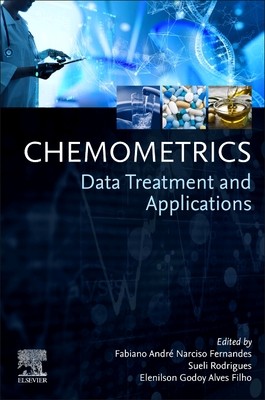
- We will send in 10–14 business days.
- Publisher: Elsevier
- ISBN-10: 044321493X
- ISBN-13: 9780443214936
- Format: 18.5 x 23.4 x 3.1 cm, softcover
- Language: English
- SAVE -10% with code: EXTRA
Chemometrics: Data Treatment and Applications (e-book) (used book) | bookbook.eu
Reviews
Description
Chemometrics: Data Treatment and Applications demonstrates the best practices for treating real-world analytical instrument data and how to apply chemometrics to this data. Rather than focusing on the mathematical theory involved in chemometrics, this book is meant for the industrial chemist, and academics and advanced students that want to use chemometrics in practice. Case studies on several applications are presented. Unlike existing literature, this book focuses on best practices, practical realities, and challenges when treating data, rather than on the mathematical theory. It also provides basic information on chemometrics, several chapters on how to treat, and the best practices used to treat, data from different analytical instruments, as well as case studies and uses of chemometrics in different fields. The book is written primarily for analytic chemists as practitioners in analytical laboratories and other industries. It will also be useful to academics and graduate, masters and postdoc students chiefly working in analytical chemistry who want to improve the practical aspects of their research activities.
EXTRA 10 % discount with code: EXTRA
The promotion ends in 20d.23:15:53
The discount code is valid when purchasing from 10 €. Discounts do not stack.
- Publisher: Elsevier
- ISBN-10: 044321493X
- ISBN-13: 9780443214936
- Format: 18.5 x 23.4 x 3.1 cm, softcover
- Language: English English
Chemometrics: Data Treatment and Applications demonstrates the best practices for treating real-world analytical instrument data and how to apply chemometrics to this data. Rather than focusing on the mathematical theory involved in chemometrics, this book is meant for the industrial chemist, and academics and advanced students that want to use chemometrics in practice. Case studies on several applications are presented. Unlike existing literature, this book focuses on best practices, practical realities, and challenges when treating data, rather than on the mathematical theory. It also provides basic information on chemometrics, several chapters on how to treat, and the best practices used to treat, data from different analytical instruments, as well as case studies and uses of chemometrics in different fields. The book is written primarily for analytic chemists as practitioners in analytical laboratories and other industries. It will also be useful to academics and graduate, masters and postdoc students chiefly working in analytical chemistry who want to improve the practical aspects of their research activities.


Reviews